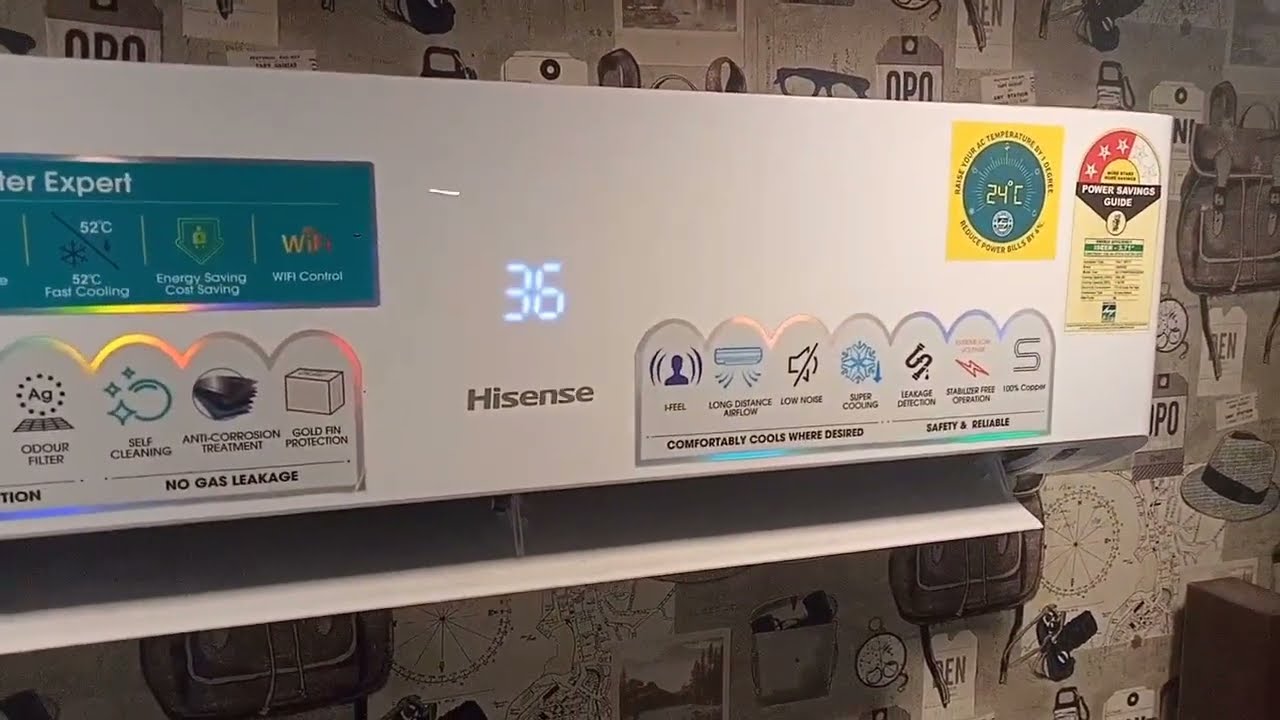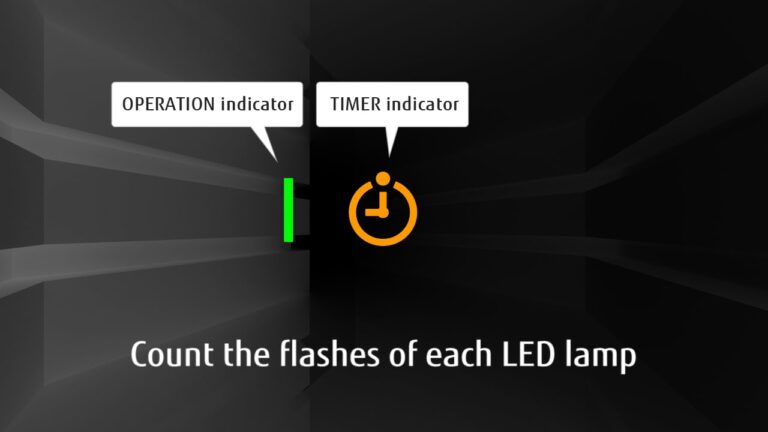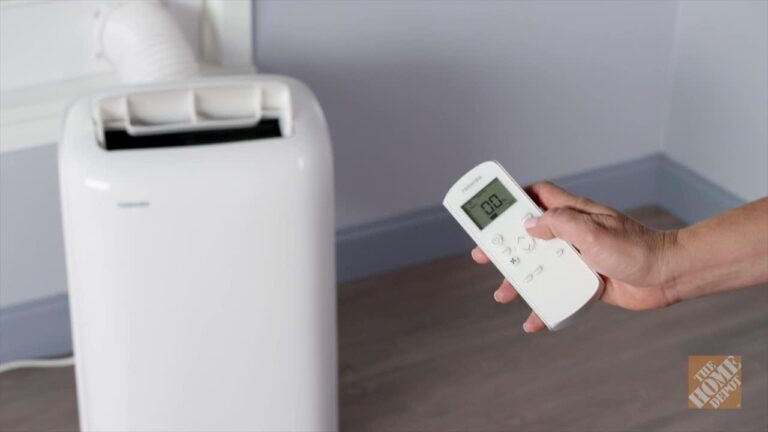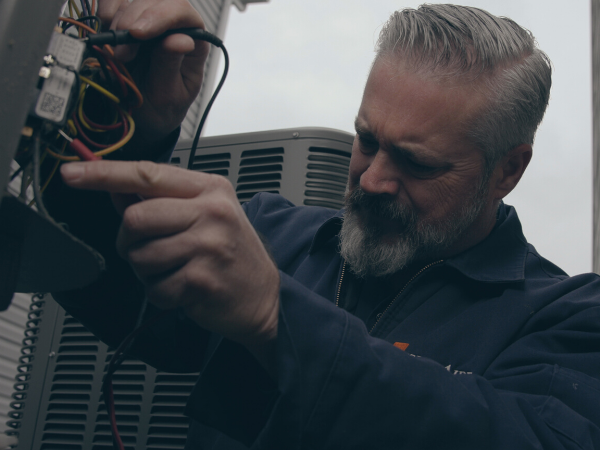Hisense Air Conditioner Error Codes: Troubleshooting Tips and Solutions
Hisense Air Conditioner Error Codes: Find accurate error codes for Hisense air conditioners including FC, E4, E5, EA, and more. Troubleshoot and solve AC errors quickly with expert tips and solutions.
Introduction To Hisense Air Conditioner Error Codes
Discover the comprehensive list of Hisense Air Conditioner Error Codes, including codes such as E4, E5, and EA. Troubleshoot your air conditioner efficiently with expert solutions and quick tips to keep your unit running smoothly.
Overview Of The Importance Of Error Codes In Troubleshooting Air Conditioners
Error codes play a crucial role in troubleshooting air conditioners, including those manufactured by Hisense. These codes provide valuable information about any malfunctions or issues within the unit, allowing users or technicians to identify and rectify problems quickly and effectively.
By understanding the error codes, users can save time and money by potentially solving minor issues on their own without the need for professional assistance. Here’s why error codes are so important when it comes to troubleshooting air conditioners:
- Error codes provide a clear indication of what is wrong with the air conditioner, guiding users towards the specific area or component that requires attention.
- They allow for efficient problem-solving by narrowing down the potential causes and hastening the troubleshooting process.
- Error codes help prevent unnecessary DIY repairs that could potentially worsen the situation or void the warranty.
- By addressing and resolving errors promptly, users can prevent further damage to the air conditioner and potentially extend its lifespan.
Explanation Of How Hisense Air Conditioner Error Codes Work
Hisense air conditioner error codes use a unique set of alphanumeric combinations to indicate various issues within the unit. These codes are displayed on the air conditioner’s control panel or LED screen, providing users with a quick reference to identify the problem at hand.
Understanding how these codes work is essential for effective troubleshooting. Here’s how Hisense air conditioner error codes function:
- Each error code corresponds to a specific error or malfunction within the air conditioner system.
- The codes are designed to be easily interpreted and provide users with an immediate understanding of the problem.
- Some error codes may require simple actions, such as cleaning or replacing filters, while others may indicate more complex issues that require professional assistance.
- Hisense provides comprehensive documentation that lists all the common error codes along with their explanations, enabling users to diagnose and resolve problems accurately.
Importance Of Understanding And Interpreting Error Codes Correctly
Understanding and interpreting error codes correctly is crucial for effective troubleshooting of Hisense air conditioners. Mishandling error codes can lead to misdiagnosis, unnecessary repairs, or even further damage to the unit. Here’s why it’s important to interpret error codes correctly:
- Accurate interpretation of error codes helps users prioritize the severity of the issue and determine the appropriate course of action.
- Misinterpreting error codes can lead to unnecessary repairs, which can be costly and time-consuming.
- Proper interpretation ensures that users can identify and address the root cause of the problem, rather than simply treating the symptoms.
- It is essential to consult the official Hisense documentation or seek professional advice when unsure about the meaning or resolution of an error code.
By understanding error codes and their significance, users can effectively troubleshoot and maintain their Hisense air conditioners, ensuring optimal performance and long-term durability.

Credit: www.amazon.com
Common Hisense Air Conditioner Error Codes
Discover the common Hisense Air Conditioner Error Codes including FC, E4, E5, and EA. Troubleshoot and solve AC errors quickly with expert solutions.
E4 Error Code:
Possible causes of the E4 error code:
- Low refrigerant level: Insufficient refrigerant can trigger this error code.
- Faulty temperature sensor: A malfunctioning temperature sensor may result in the E4 error code.
- Defective compressor: If the compressor is not functioning properly, it can lead to the E4 error code.
Troubleshooting tips and solutions for the E4 error code:
- Check the refrigerant level: Ensure that the refrigerant level is sufficient. If it is low, contact a professional technician for a refill.
- Inspect the temperature sensor: Inspect the temperature sensor for any damage or loose connections. Replace it if necessary.
- Test the compressor: If the compressor is faulty, it may require repair or replacement. Consult a qualified technician for assistance.
E5 Error Code:
Possible causes of the E5 error code:
- Blocked or restricted airflow: A blocked or restricted airflow can cause the E5 error code.
- Dirty air filter: A dirty air filter can obstruct the airflow and trigger the E5 error code.
- Faulty fan motor: A malfunctioning fan motor may result in improper airflow and lead to the E5 error code.
Troubleshooting tips and solutions for the E5 error code:
- Check for blockages: Ensure that there are no obstructions in the air vents or ducts that may restrict airflow. Remove any obstacles if found.
- Clean or replace the air filter: Clean or replace the air filter regularly to maintain proper airflow and prevent the E5 error code.
- Inspect the fan motor: Test the fan motor for any issues, such as loose connections or mechanical problems. Repair or replace the fan motor if necessary.
FC Error Code:
Possible causes of the FC error code:
- Faulty outdoor unit fan motor: A malfunctioning outdoor unit fan motor may trigger the FC error code.
- Defective outdoor unit PCB: If the outdoor unit PCB (Printed Circuit Board) is defective, it can result in the FC error code.
- Wiring issues: Faulty wiring connections between the indoor and outdoor units can cause the FC error code.
Troubleshooting tips and solutions for the FC error code:
- Check the outdoor unit fan motor: Inspect the outdoor unit fan motor for any issues, such as insufficient lubrication or motor failure. Repair or replace the fan motor if necessary.
- Test the outdoor unit PCB: Consult a professional technician to test the outdoor unit PCB for any faults. Replace it if needed.
- Verify the wiring connections: Ensure that the wiring connections between the indoor and outdoor units are secure and properly connected. Repair any loose or faulty connections.
EA Error Code:
Possible causes of the EA error code:
- Excessive voltage fluctuation: An abnormal voltage fluctuation can trigger the EA error code.
- Faulty power supply unit: A malfunctioning power supply unit may result in the EA error code.
- Defective control board: If the control board is defective, it can lead to the EA error code.
Troubleshooting tips and solutions for the EA error code:
- Stabilize the voltage: Use a voltage stabilizer or surge protector to regulate the voltage supply and prevent fluctuations.
- Test the power supply unit: Consult a professional technician to test the power supply unit for any faults. Replace it if necessary.
- Inspect the control board: Check the control board for any visible signs of damage or loose connections. Repair or replace the control board if needed.
How To Troubleshoot Hisense Air Conditioner Error Codes
Learn how to troubleshoot Hisense air conditioner error codes with our informative article. Get expert solutions and troubleshooting tips to quickly resolve any issues with your air conditioner. Our step-by-step guide will help you identify and fix common error codes, ensuring efficient and effective cooling for your home or office.
Step-By-Step Guide To Troubleshooting Hisense Air Conditioner Error Codes:
- Identify the specific error code displayed on your Hisense air conditioner.
- Refer to the user manual or the manufacturer’s website to understand the meaning of the error code.
- Follow the recommended troubleshooting steps provided by Hisense for that particular error code.
- If the issue persists, try the common solutions outlined below or contact a professional technician for assistance.
Common Solutions For Different Error Codes:
- E4: This error code indicates an indoor fan motor malfunction. Check the fan motor by rotating it manually, and if it doesn’t rotate smoothly, consider replacing it. Additionally, inspect the fan capacitor and fan wiring for any damage.
- E5: The E5 error code signifies an abnormal temperature sensor reading. Clean the temperature sensor on both the indoor and outdoor units to ensure accurate readings. If the problem persists, the temperature sensor may need replacement.
- E19: This error code signals a communication error between the indoor and outdoor units. Verify that the communication wiring is properly connected and undamaged. If necessary, consult a professional technician to diagnose and fix the communication issue.
Resetting The Air Conditioner:
- Turn off the air conditioner using the power button on the unit or the remote control.
- Unplug the air conditioner from the power outlet and wait for at least 10 minutes.
- Plug the air conditioner back in and turn it on. This will reset the unit and clear any minor technical glitches.
Checking The Filters And Cleaning Them:
- Locate the air filters on the indoor unit and remove them.
- Rinse the filters under running water to remove dust and debris, or vacuum them to get rid of any built-up dirt.
- Allow the filters to dry completely before reinstalling them back into the unit.
Verifying The Power Supply And Voltage:
- Check if the air conditioner is properly plugged into the power outlet. Ensure that the power cord is not damaged.
- Make sure that the voltage supplied to the air conditioner matches the specified voltage on the unit. Low or high voltage can cause operational issues.
Inspecting The Outdoor Unit For Obstructions:
- Examine the outdoor unit for any obstructions, such as leaves, debris, or objects blocking the airflow.
- Clear any obstructions and ensure that there is adequate space around the unit for proper ventilation.
Contacting A Professional Technician For Advanced Troubleshooting:
If you have followed the troubleshooting steps above and the issue persists, it is recommended to contact a professional technician who specializes in Hisense air conditioners. They will have the expertise to diagnose and resolve more complex error codes, ensuring your air conditioner operates smoothly and efficiently.
Additional Hisense Air Conditioner Error Codes And Solutions
Discover additional Hisense air conditioner error codes and their corresponding solutions for troubleshooting. With expert tips and guidance, you can quickly and effectively resolve any error code issues with your Hisense air conditioner.
List Of Additional Error Codes And Their Meanings:
- Error Code 19: This error code indicates a communication issue between the main control board and the display board of the Hisense air conditioner. It may occur due to loose connections or faulty wiring. Troubleshooting tip: Check and secure all connections between the main control board and the display board. If the issue persists, consult a professional technician.
- Error Code FC: Error code FC points to a refrigerant leak in the system. It is important to address this issue promptly as it can lead to decreased cooling efficiency and potential damage to the air conditioner. Troubleshooting tip: Contact a certified technician to inspect and repair the refrigerant leak.
- Error Code E4: Error code E4 signifies an outdoor unit fan motor fault. This error may occur due to a faulty fan motor or issues with the connected wiring. Troubleshooting tip: Check the fan motor and its wiring for any loose connections or damage. If necessary, replace the fan motor or seek assistance from a qualified technician.
- Error Code E5: Error code E5 indicates an abnormal temperature sensor reading. It could be caused by a malfunctioning temperature sensor or a wiring issue. Troubleshooting tip: Check the temperature sensor for any damage or loose connections. If needed, replace the temperature sensor or seek professional help.
- Error Code EA: Error code EA indicates a communication error between the indoor and outdoor units. It may occur due to issues with the wiring or a faulty control board. Troubleshooting tip: Inspect the wiring connections between the indoor and outdoor units. If the problem persists, consult a licensed technician to diagnose and resolve the communication error.
Reasons Why Error Codes May Vary:
- Different models and series of Hisense air conditioners may have different error codes. Each error code corresponds to a specific issue in the system, and the variations depend on the specific components and functionalities of the model.
- Error codes can also differ based on the firmware or software version installed in the air conditioner. Manufacturers often update their firmware to improve performance or address known issues, which may result in new error code assignments.
Troubleshooting Tips And Solutions For Each Additional Error Code:
- Error Code 19: Check and secure all connections between the main control board and the display board. If the issue persists, consult a professional technician.
- Error Code FC: Contact a certified technician to inspect and repair the refrigerant leak.
- Error Code E4: Check the fan motor and its wiring for any loose connections or damage. If necessary, replace the fan motor or seek assistance from a qualified technician.
- Error Code E5: Check the temperature sensor for any damage or loose connections. If needed, replace the temperature sensor or seek professional help.
- Error Code EA: Inspect the wiring connections between the indoor and outdoor units. If the problem persists, consult a licensed technician to diagnose and resolve the communication error.
The Importance Of Referring To The Hisense User Manual For Specific Error Codes:
It is essential to refer to the Hisense user manual when encountering error codes on the air conditioner. The user manual provides detailed information about the specific error codes and their meanings. It is a valuable resource that helps users understand and troubleshoot issues with their air conditioner accurately.
The user manual also provides step-by-step instructions for resolving common issues related to error codes. Following the manufacturer’s guidelines ensures proper troubleshooting, prevents further damage to the system, and helps users avoid unnecessary service calls or expenses.
Remember to consult the Hisense user manual for the most accurate and up-to-date information on error codes specific to your air conditioner model.
Frequently Asked Questions On Hisense Air Conditioner Error Codes
What Is The Error Code E3 On Hisense Air Conditioner?
The error code E3 on a Hisense air conditioner indicates a fault in the system.
What Is Error Code 4 On Hisense Ac?
Error code 4 on Hisense AC indicates a fault. Consult the user manual or contact customer service for assistance.
What Is The Error Code E8 On A Hisense Air Conditioner?
The error code E8 on a Hisense air conditioner indicates a fault or problem with the unit.
What Is Error Code E5 On Hisense Aircon?
Error code E5 on Hisense aircon indicates a communication error between the indoor and outdoor units.
Conclusion
If you’re experiencing an error with your Hisense air conditioner, it’s important to understand what the error codes mean and how to resolve them. This will help you quickly troubleshoot and fix any issues you may be facing. Knowing the common error codes and their causes can save you time and money by avoiding unnecessary repair calls.
Whether it’s an E4, E5, EA, or any other error code, our informative article provides troubleshooting tips and expert solutions to help you solve the problem fast. By following the proper steps, you can get your air conditioner back up and running efficiently.
Don’t let an error code become a cause for concern. With our guidance, you’ll be able to diagnose and fix the issue on your own. Keep your Hisense air conditioner running smoothly and enjoy a comfortable living space year-round.






